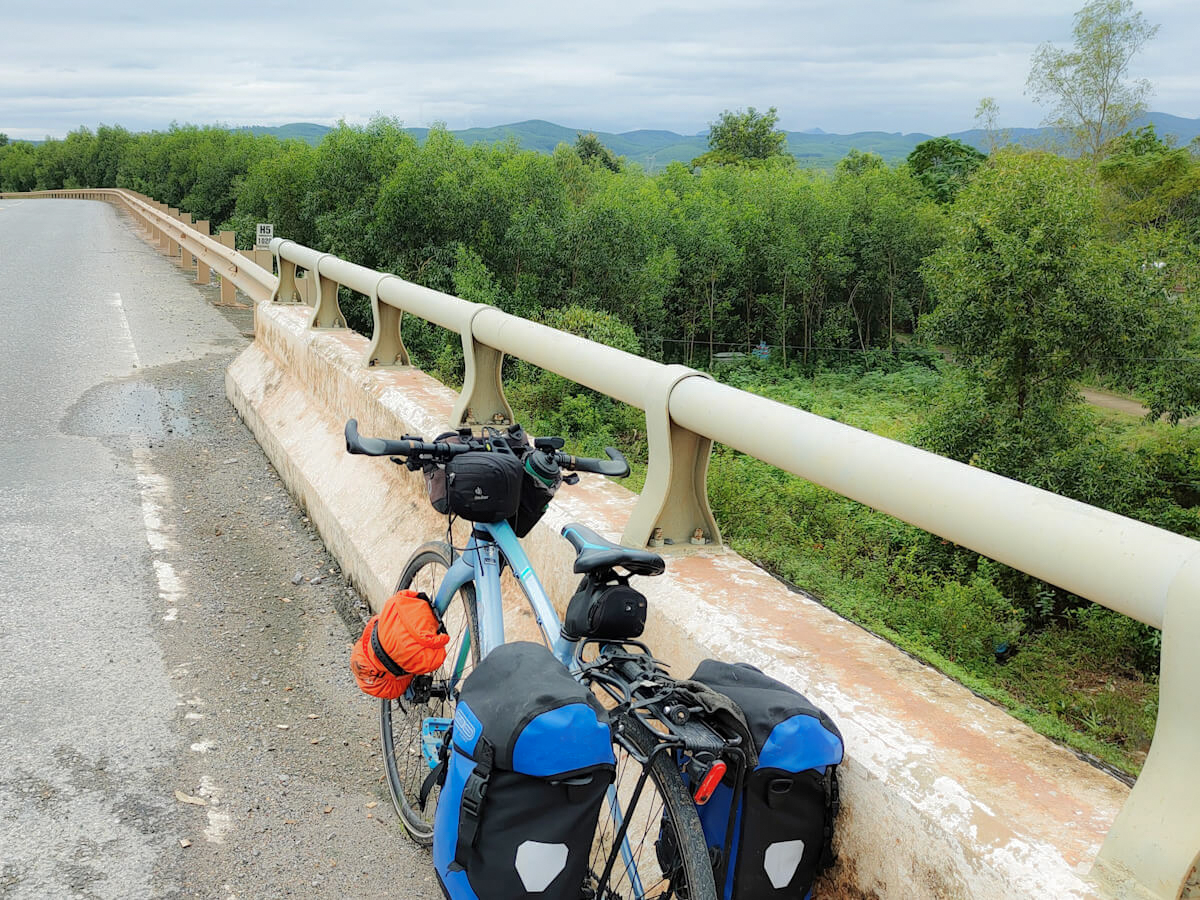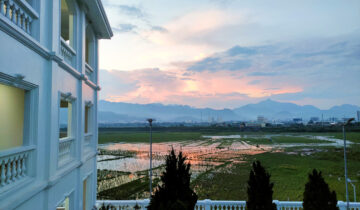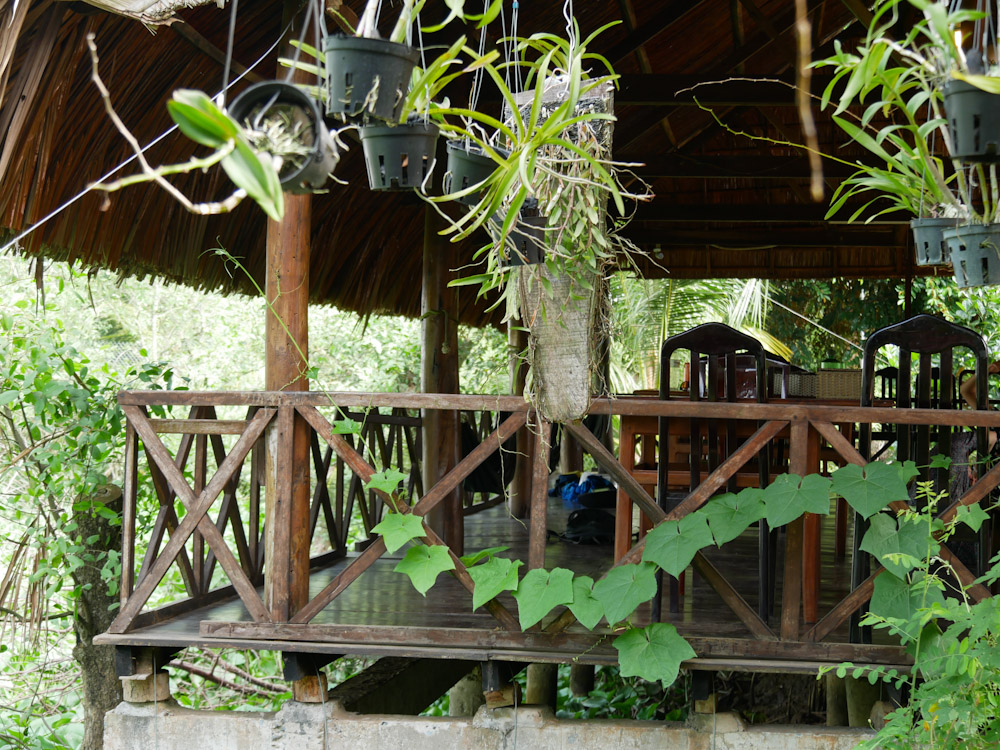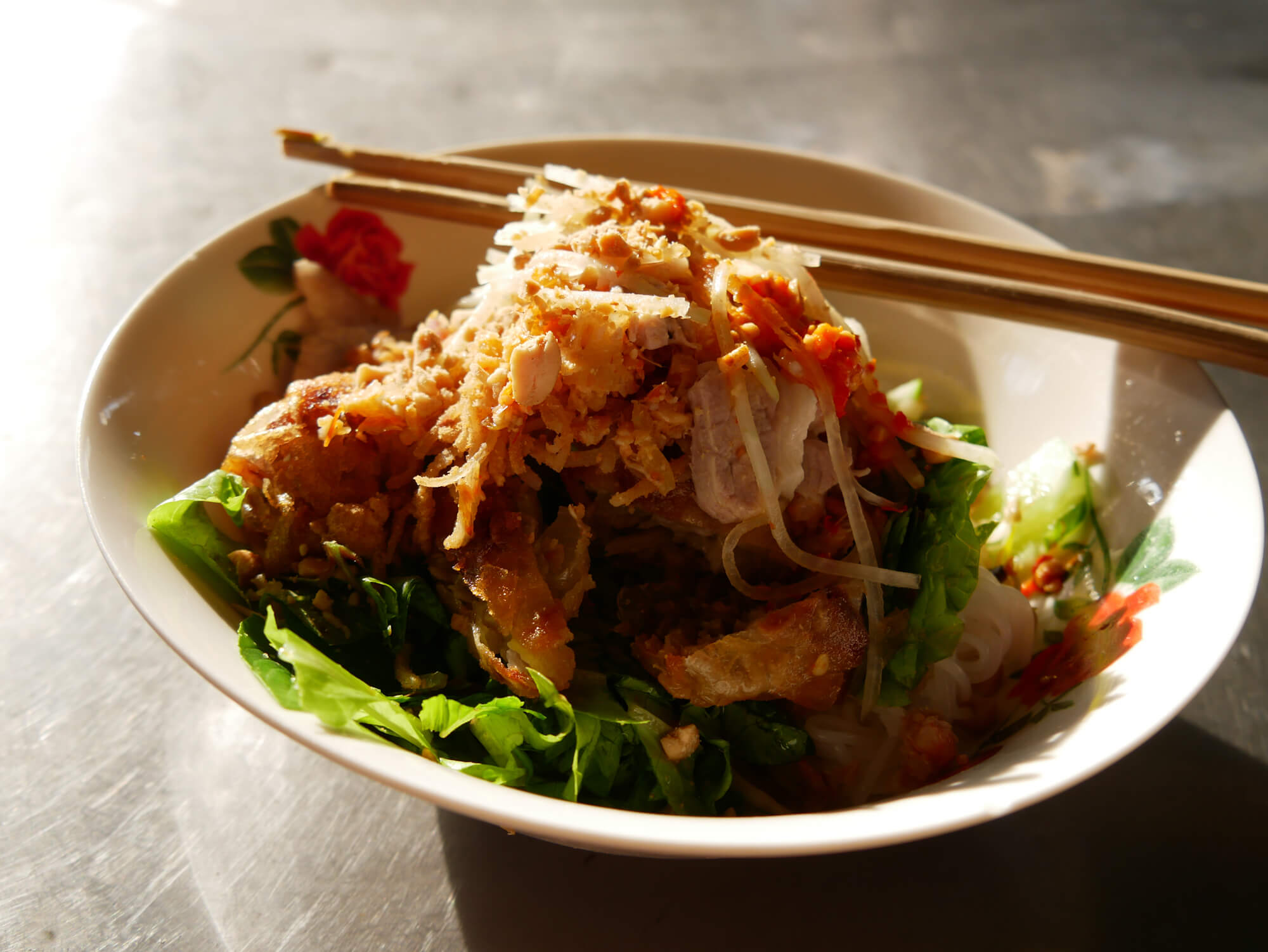Not so far from the land of caves and jungles I found myself in the land of cafes, whiling away a day in Dong Hoi. From there I tackle another beautiful section of the Ho Chi Minh Road, ending in the historical DMZ region where Vietnam was once divided through its centre.
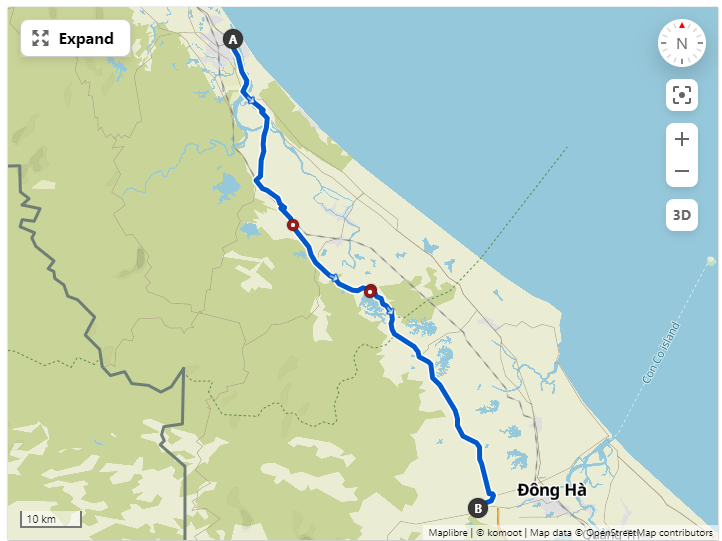
This section of Highway 15 (the Ho Chi Ming Road) is well surfaced, relatively quiet, and not too hilly, passing by orchards, gentle hills, wetlands and the rail line. Occasional trucks do come past, but its easy to avoid them by cycling defensively and pulling over when needed.
Dong Hoi
Dong Hoi is the leafy, attractive and sometimes elegant capital of Quang Binh province.
It was a good place to eat pancakes, drink coffee, get some errands done and (for a moment) forget the wilds of the Ho Chi Minh road. For a few glorious hours I made myself well at home at the delightful Tree Hugger Cafe, where your cappuccino comes with biscuits, and a heart : )
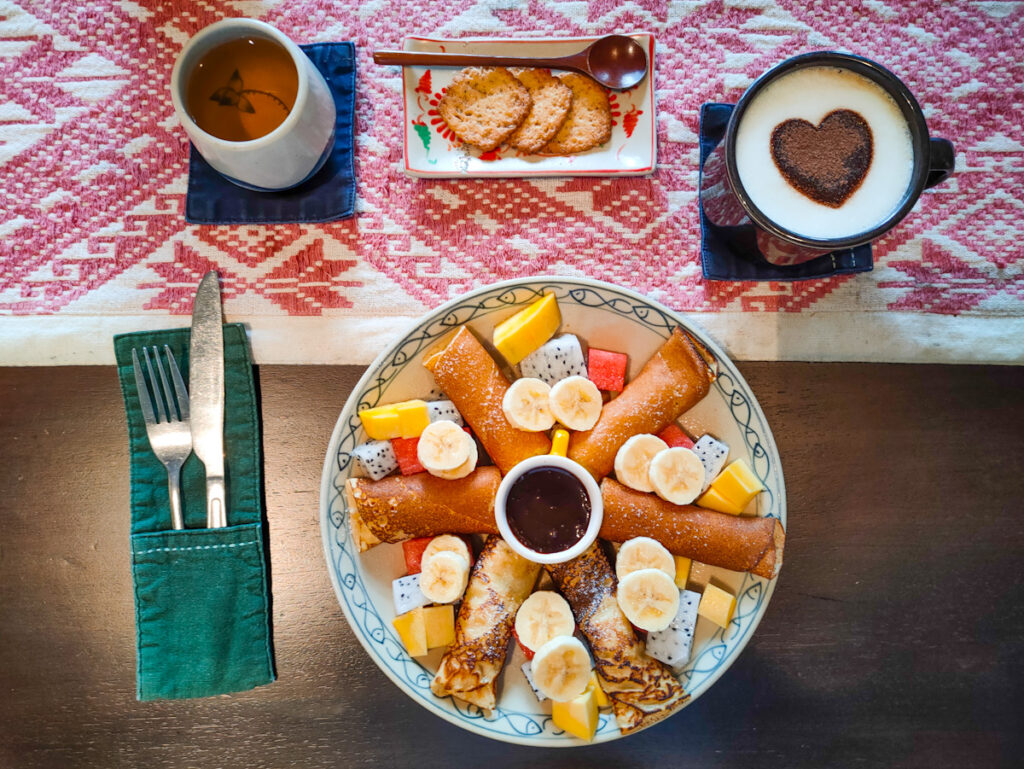
A good place to get things done
As the rain bucketed down, I successfully printed out some paperwork for my upcoming visa run, had my glasses repaired and consulted the local IT gurus on on my faulty computer cable (officially un-saveable).
Sloshing through the streets, I see dozens of workers frantically pulling flowers into colourful and elaborate arrangements, which I later realised were for Vietnam Women’s Day.
Dong Hoi’s cafe culture
Then it is time for more coffee, this time at An Cafe. And I’m calling it right now, this is the best coffee in Central Vietnam.
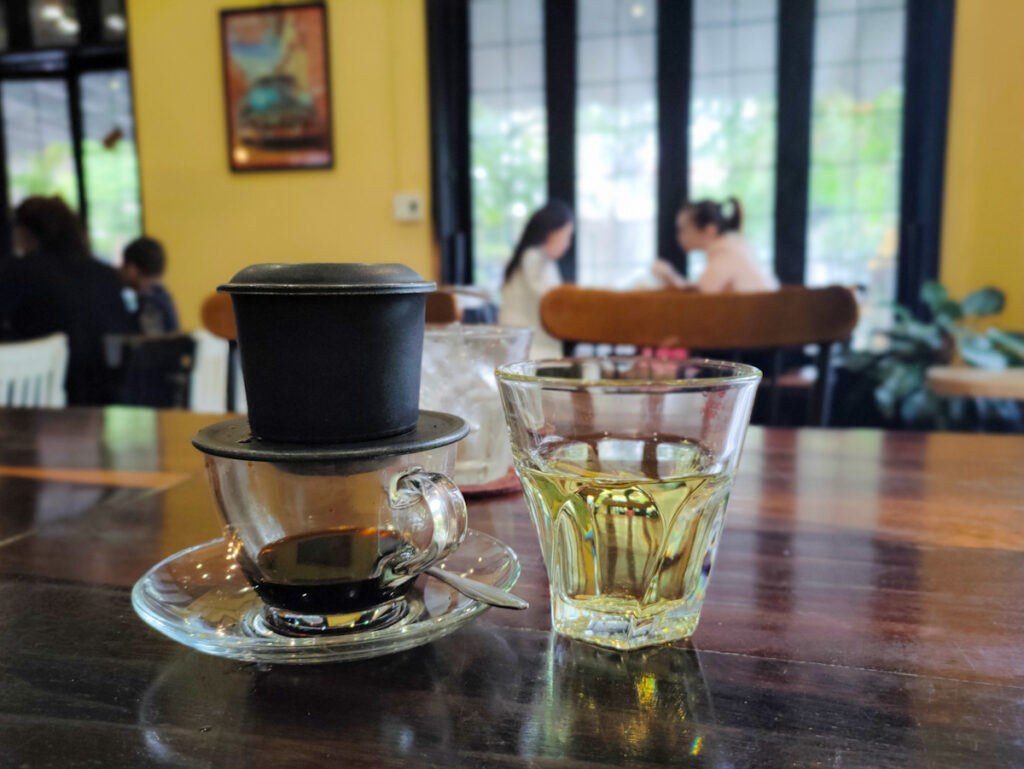
Most people in the cafes are sitting with laptops, and I later hear that it’s common practice for the city’s workers to only briefly check in to the office before heading with their colleagues to work (or not) from one of the many beautifully decorated coffee shops.
In any case I have a good chat with a Vietnamese/Australian lady who splits her time between Dong Hoi and Sydney.
Encounters with bomb disposal experts
I grab a beer that night at the Buffalo Pub and Hostel, which has re-invented itself after Covid from a backpacker hangout to a higher-end restaurant and hostel appealing to Vietnam’s growing middle class.
There I had a the chance to meet the gregarious and super-switched on hostel owner who introduced me to Sam and Nick, two bomb disposal experts working for an international organisation called MAG (Mines Advisory Group).
Dong Hoi is very close to the former DMZ, which during the war formed a line through the centre of Vietnam, dividing north from south.
The whole region also closely borders Laos, was one of the most heavily bombed in the war. On the Vietnam side there is still an estimated 800,000 tonnes of unexploded ordinance throughout the countryside, though I’m told MAG has cleared more than 30 million square metres of land.
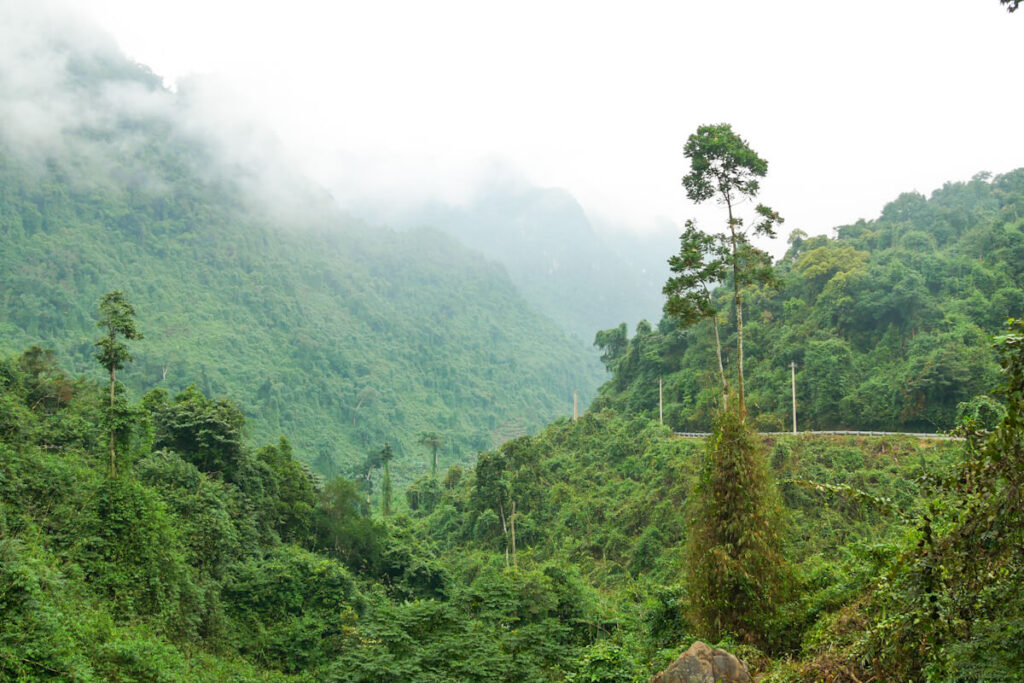
I’m in awe of these guys, who have lived a very isolated existence through COVID, training hundreds of locals
Sam is based in Dong Hoi while Nick lives in Dong Ha.
When I tell them I can’t imagine how hard or dangerous their job is they laugh it off and tell me it’s mainly procedural.
Something tells me that’s not exactly one hundred per cent true – and as long time experts it seems that they play an important part in problem solving when situations become unusual.
Sam, who’s Australian, shows me a picture of a team wading through a river. It was the only way to get equipment in or out during the recent floods.
Sadly, Vietnam’s new tightened visa rules mean it’s too hard for Sam’s wife and 3 year old daughter to live with him, given they were required to take a seven hour drive each way to the border each month. A few months of this were enough, and now the family have moved away to Bangkok.
Journey to Dong Ha via the Ho Chi Minh Road
Speaking of visa runs, it was time to do one of my own.
Losing a whole day to heavy rain in Dong Hoi means I HAVE to make 100+ kilometres to reach my planned destination of Cam Lo, a small town to the west of Dong Ha. From there I plan to hail a local bus up a steep, winding road to the border.
To do that I will tackle another section of the legendary Highway 15, known as the Ho Chi Minh Road.

This this section of Highway 15 is relatively quiet and good for cycling.
Before hitting the legendary highway I take a surprisingly enjoyable road through a serene watery and pastoral landscape, winding through fields flooded by the rainy season. Herons and water birds float over ahead. Feeling the serenity I wait patiently for my filter drip coffee to drip before ladling ice into my cup.
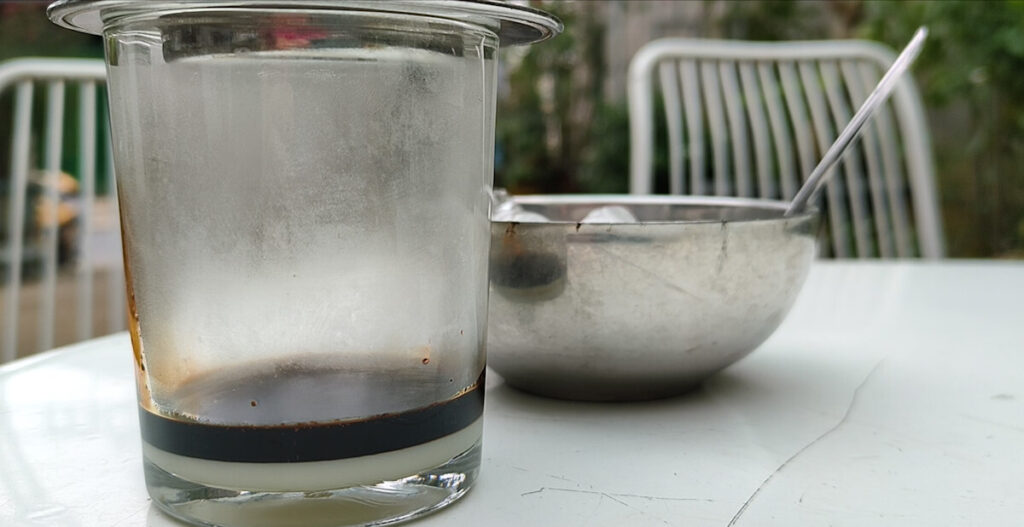
Gentle hills, orchards, rubber plantations, rivers and a rail line roll by under overcast skies. Seeing a lake on the map, I make my way through forest dirt paths to an embankment where the only sound is the clanking of cowbells. In a noise-loving country, it’s nice to take a moment of pure peace
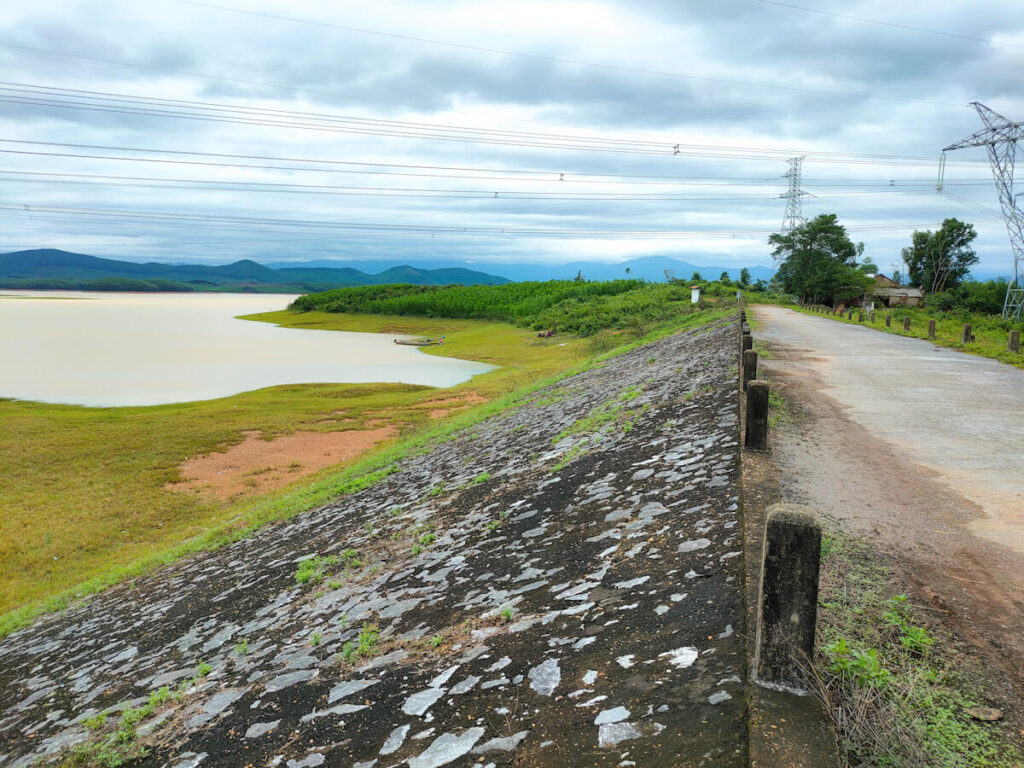
Lunch with truck drivers – remote but delicious
For lunch I stop at the only option for miles, the remote Com An Ma, a lunch restaurant for long distance truck drivers.
The portions are generous, delicious and served by a family who clearly. love a bit of banter. Once again I conclude that Vietnamese truckies must be the best fed in the world.

Icecream stopover at a flowery camping farm
Just a short distance away I see the word ‘Kem’ (icecream) on a big sign and screech to a halt.
The venue is AM Farm, one of many such places popping up around Vietnam for groups of young people to hang out in nature for a day, eat food and take Instagram shots aided by a variety of selfie shots.
Apart from fruit trees, flowers and a lake, the property is also set up for camping. In Vietnam ‘comping’ usually means with picnicking, but I asked and you definitely can stay overnight here.
It certainly seems like a nice enough place for an icecream, though when I pull in and ask for “Kem” there’s a bit of language confusion as I create an impossible English-Vietnamese mish mash.
“You have kem?”
“You want to camp?”
“No, kem?”
Etc.
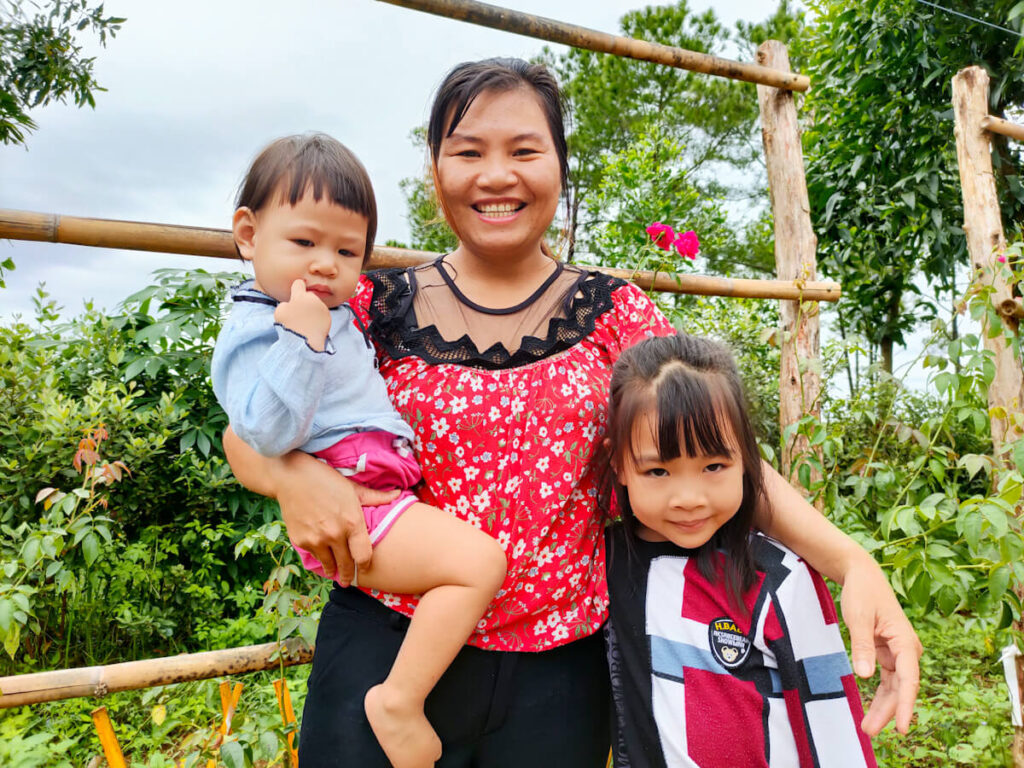
In any case, it was lovely to meet the lady here, who had great English, two adorable children.
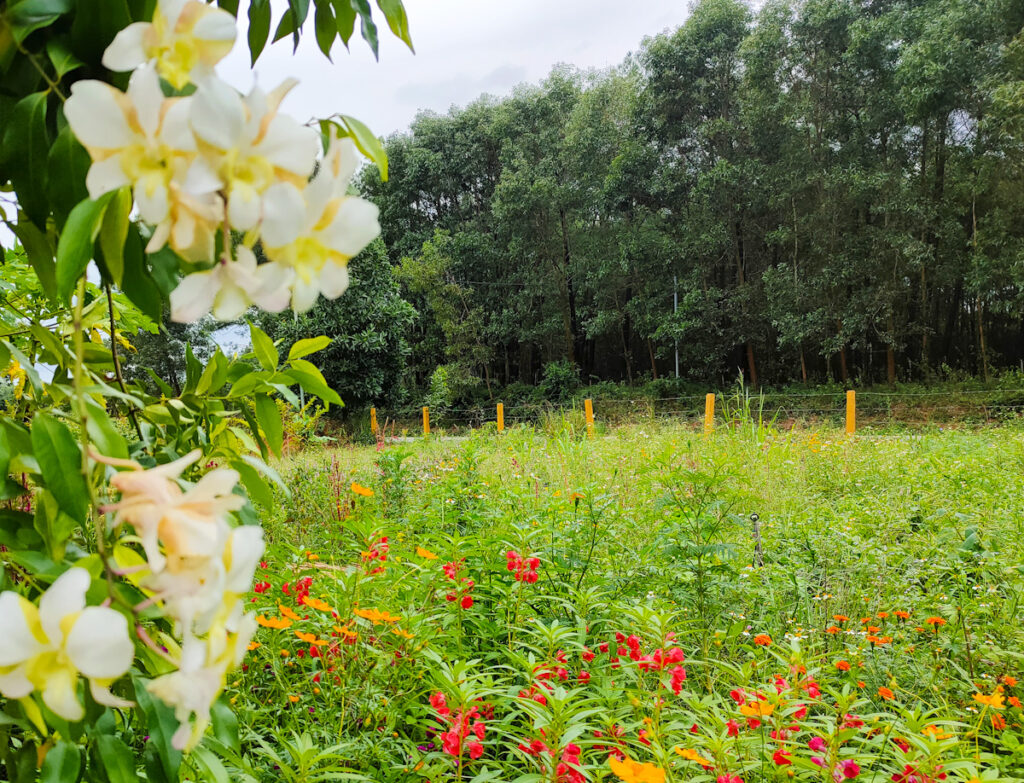
Staying in Cam Lo, a small town near Dong Ha
In many towns I pass groups of women dressed up in their best clothes, heading to functions or losing for pictures.
It’s Vietnamese women’s day – which explains the masses of flowers in Dong Hoi.
100 kilometres later I reach my destination, the small town of Cam Lo, about 10km west of the regional capital of Dong Ha.
There, I check in to the new and wonderfully-named Aloha guesthouse, run by friendly young hosts in their twenties.
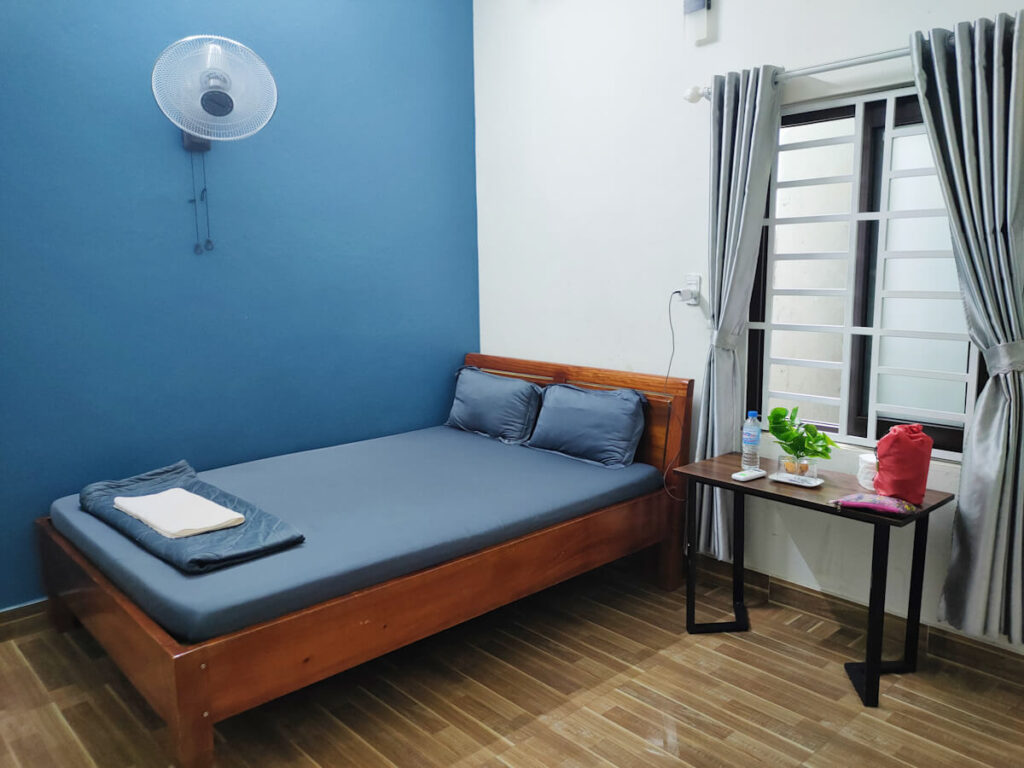
There I score an impeccably clean room for the price of only $13, though finding a meal for dinner is a more challenging prospect. Only one local restaurant is open and they aren’t too keen on serving a solo diner.
Meanwhile, Vietnamese Women’s Day is going off around the corner and the ladies of Cam Lo are up and about with music pumping.
Luckily things wrap up promptly at 10pm and I’m out like a light, ready for a journey to Khe Sang and the border.


